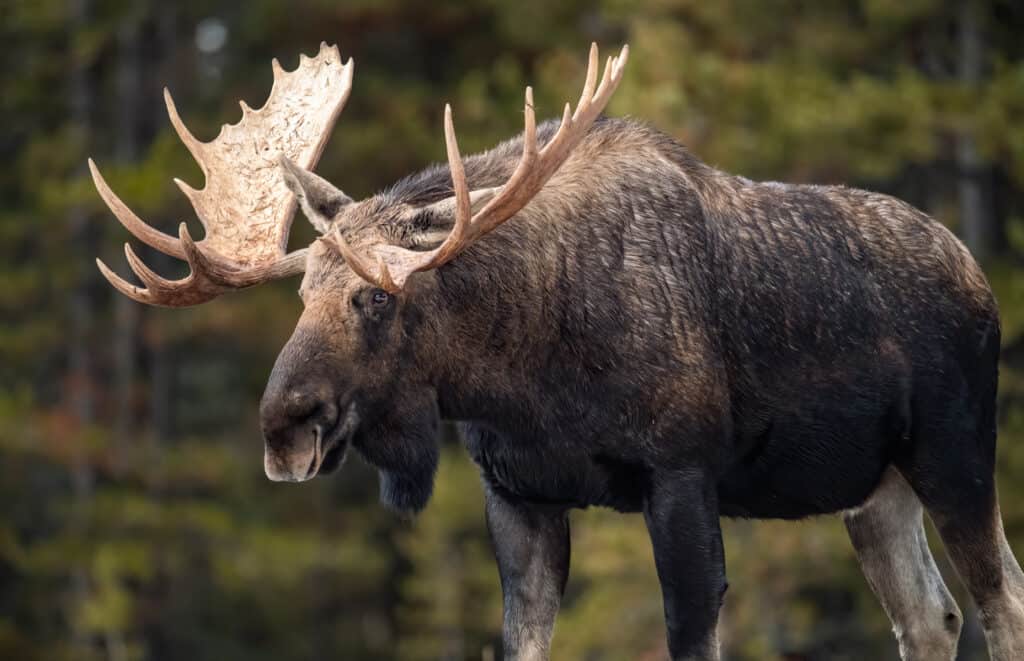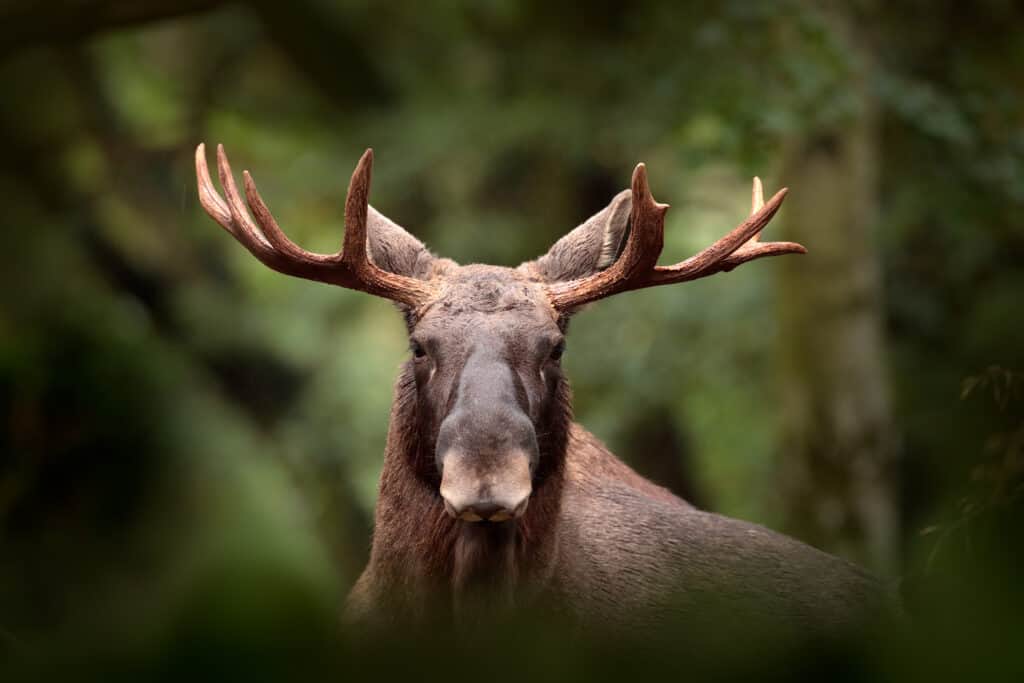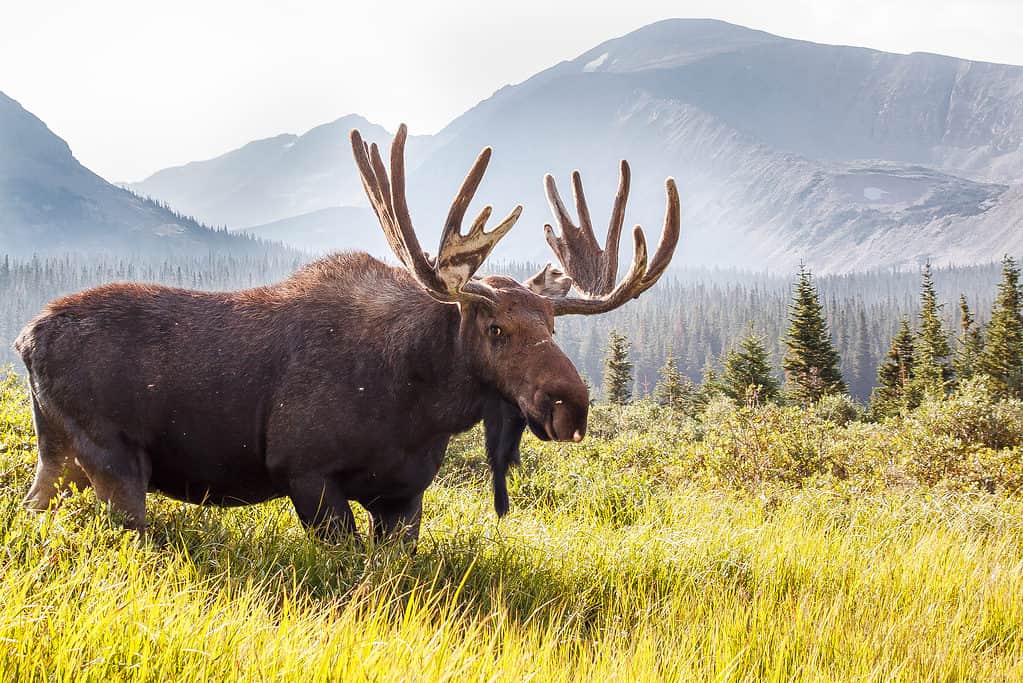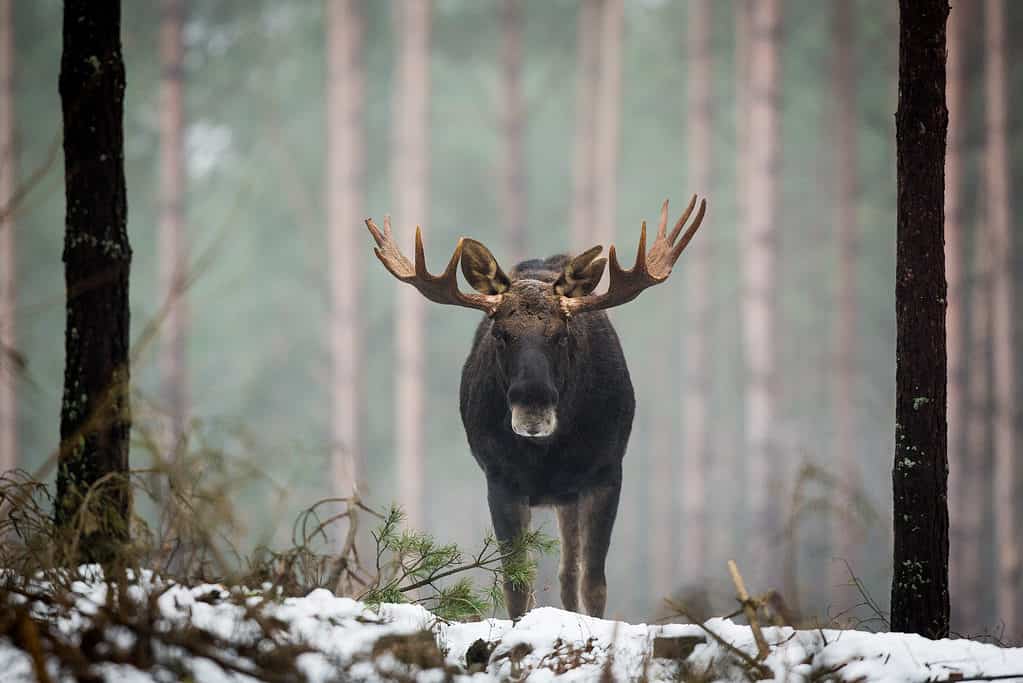Moose are massive animals, easily surpassing 1,000 pounds. They also aren’t easy to catch, so it’s impressive when one catches a record-breaking moose. That’s exactly what one person did in Colorado. Keep reading to discover the largest moose ever caught in Colorado and more fun facts about this unique four-legged animal.

©Harry Collins Photography/Shutterstock.com
About Moose
Moose are members of the New World deer subfamily. In Eurasia, they are called elk. Since these large animals can easily weigh over 1,000 pounds, it’s not hard to imagine how they are the largest living species in the deer family. Moose mainly live in colder regions, however, their range has decreased because of overhunting and land development.

©iStock.com/Ondrej Prosicky
Size and Description
Female and male moose vary in appearance. For example, male moose have large antlers with unique shapes. Most male moose have broad and flat antlers with points on the outer edge. However, the size and the number of tines depend on the moose’s region. Moose living in northern Europe have flatter, but larger antlers compared to those in the south. The largest antlers occur between ages 5 to 12, since antlers start to shrink in size and symmetry by age 13. However, most moose have antlers with a wide spread of over 79 inches. These antlers are also very heavy and can weigh up to 79 pounds.
Moose have coats that change color depending on the season and the region. They have double coats with keep them warm during cold and snowy winters. The top layer is filled with guard hairs which help moose swim and float. Despite being so large, moose have short tails, which usually stop growing at 8 cm long.
These large animals stand up between 4 feet and 7 inches and 6 feet and 11 inches. Males are larger and weigh more. They can weigh anywhere from 838 to 1,543 pounds. Females, however, are slightly smaller and weigh 441 to 1,080 pounds. Although moose rarely weigh over 1,543 pounds, there have been unconfirmed reports of moose weighing above 2,000 pounds.
Diet
Although moose are large and can be intimidating, they are herbivores. These grazing herbivores mainly consume plants and fruits. An adult moose eats about 23,000 kilocalories every day. Apart from grass, moose eat fresh shoots. Interestingly, moose also eat a lot of aquatic vegetation, like lilies. This plant provides moose with the sodium they need. While moose are heavy animals, they dive up to 18 feet deep in lakes and ponds to find food.
Predators
The only animal that actively hunts moose is the Siberian tiger. However, moose can fall prey to hungry brown bears and large packs of gray wolves. Young moose calves are the most vulnerable. Black bears and cougars frequently hunt for young moose in May and June. Other animals eat the dead carcass of the moose or attack when they are vulnerable. For example, wolverines have been observed attacking vulnerable, weak, and injured moose. They also eat moose as carrion. While it might be hard to imagine, some marine animals also prey on moose. For example, some moose traveling between islands out of North America’s Northwest Coast have become prey to killer whales. Although not common, there’s been one reported Greenland shark attack on a moose.
Distribution
Moose have a large range. They are common throughout North America, however, their population has decreased. You can find moose in most of Canada and Alaska. They are also common in northern New England, the upper Rocky Mountains, northern Minnesota, Isle Royale in Lake Superior, northern Wisconsin, and Michigan’s Upper Peninsula. Although most moose live in northern North America, there are some in Colorado and Utah. Moose are also native to Europe and Asia. For example, large numbers are found in Sweden, Poland, Estonia, Norway, Finland, and Latvia. There are also small populations in parts of China and Mongolia because of poaching. However, moose are now protected.
In New Zealand, there is some evidence to suggest a moose population, but it’s unlikely. Moose were introduced to the country in 1900. It failed and ten years later, ten moose were brought to Fiordland. The last confirmed sighting of a moose in New Zealand was in 1952, but more recently people have found antlers, markings, and hair.
The Largest Moose Ever Caught in Colorado
Mark A. Litzelman caught the largest moose ever in Colorado in 2020. It scored 196 6/8. It was a Shiras’ moose, which is the largest game mammal in the states. Shiras’ moose is a moose species mainly found in the Rocky Mountains region. These large moose can weigh up to 1,000 pounds and stand more than 6 feet tall.

©Michael Liggett/Shutterstock.com
The Largest Moose Ever Caught in the World
The largest moose ever caught and recorded in the world weighed 1808 pounds and was shot in September 1897 at the Yukon River. At the shoulder, it measured 7 feet and 8 inches. The largest moose ever caught in the world belonged to the Alaskan Yukon moose subspecies and is the largest moose subspecies in the world.

©Szczepan Klejbuk/Shutterstock.com
The post Discover The Largest Moose Ever Caught in Colorado appeared first on AZ Animals.
from Animal News, Facts, Rankings, and More! - AZ Animals https://ift.tt/3TV1HQh